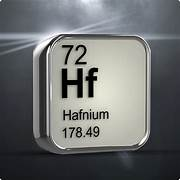From Nucleus to Nebula: The Future of Space Travel with Triggered Nuclear Isomers-by B P Singh | BPS The Atomic Explorer
- bpsinghamu
- Jul 20
- 4 min read
Recently, I had the incredible opportunity to listen to Prof. A K Jain's (Ex-Head Physics Department, IIT Roorkee, India) captivating talk on nuclear isomers. The occasion was the forum of the International Conference on Nuclear Structure and Nuclear Reactions, held the the Physics Department, Aligarh Muslim University, ALIGARH, INDIA, during 5-7 May, 20025. I was immediately fascinated by the idea that these tiny, metastable nuclear states could one day power spacecraft and revolutionize energy storage. Being deeply interested in heavy-ion nuclear reactions myself, this sparked my curiosity to dive into the literature and explore the cutting-edge science behind these atomic wonders. What I found was a glimpse of a future where space travel might leap beyond chemical rockets into the realm of nuclear gamma-ray propulsion. This may seem to be science fiction today, but I am sure will lead to reality some day.
What Are Nuclear Isomers?
At the heart of this idea are nuclear isomers—excited states of atomic nuclei that can “store” energy for years, sometimes decades, before releasing it suddenly in the form of high-energy gamma rays. Think of them as nature’s own ultra-dense batteries, holding vast amounts of energy locked inside their nuclear structure.
One superstar among them is Hafnium-178m2. This isomer has a half-life of 31 years and packs an astonishing energy density—about 1.3 gigajoules per gram if fully harnessed. To put this in perspective, that’s millions of times more energy per gram than conventional chemical fuels like hydrogen or kerosene. Imagine the possibilities if we could control when and how this energy is released!

Given this tremendous potential, I propose that a promising research direction would be to employ advanced nuclear modeling and quantum simulations to identify other isomers with more accessible triggering mechanisms or longer lifetimes. This could expand the catalog of usable isotopes, offering a broader range of options for space propulsion or compact energy sources.
A New Kind of Propulsion?
Here’s the thrilling vision: by triggering the decay of these isomers on demand, a spacecraft could produce controlled bursts of gamma radiation. This energy could either directly propel the spacecraft through photon pressure or heat a propellant for thrust. Such a system would be compact, incredibly energy-dense, and could slash travel times to Mars and beyond from months to mere weeks.

This is nuclear physics applied in a way that blends quantum mechanics, heavy-ion reaction knowledge, and cutting-edge materials science—fields I’ve been immersed in during my studies and research.
To make this vision a reality, coupling triggered gamma emission with advanced materials capable of efficiently converting gamma rays into usable heat or thrust could be a game-changer. Emerging nanomaterials or metamaterials might be designed to optimize both energy conversion and radiation shielding, making the propulsion system both efficient and safe.
Why Haven’t We Done This Yet?
Despite the promise, we’re still scratching the surface. Triggering the decay of nuclear isomers reliably and safely remains an immense challenge.
Triggering on Demand: Experiments in the late 1990s, like those at Lawrence Livermore National Lab, tried to induce decay of Hafnium-178m2 using X-rays. Initial reports hinted success, but subsequent studies couldn’t reproduce the results consistently. The quantum complexity of nuclear states—with strict rules on spin and energy transitions—means our control is still rudimentary.
To overcome this, I propose (of course may scientists are doing that as well) exploring new approaches using ultra-fast, tunable X-ray free electron lasers (XFELs). These sources may provide the precision energy input required to stimulate isomeric transitions more reliably and selectively, bringing us closer to controlled triggering.
Production and Safety: Manufacturing sufficient quantities of these isomers is costly and requires specialized nuclear reactors or particle accelerators. But not impossible given the importance of the subject. Plus, managing the intense gamma radiation safely demands advanced shielding and conversion technologies that haven’t yet been developed.
To address these issues, targeted heavy-ion nuclear reactions could be researched as a cost-effective method to produce the necessary isomers in larger quantities. Additionally, innovative lightweight gamma shielding materials could be developed to ensure safety aboard spacecraft while minimizing mass, a critical factor for space travel.
A Vision for the Future
Progress in gamma-ray lasers, precise X-ray sources, nuclear modeling, and advanced materials science could one day crack these challenges. When that day comes, the implications will be profound, not only for space travel but for ultra-compact power sources and new energy paradigms.

As someone fascinated by how heavy ions interact with nuclei, creating exotic states and driving nuclear reactions, the prospect of controlling isomeric states resonates deeply. It’s a vivid example of how fundamental nuclear science could transform the way humanity explores space and uses energy.
Further Readings
Aprahamian, A., & Sun, Y. (2005). Nuclear Isomers: Structures and Applications. Nature Physics, 1, 81–88.
Jain, A. K., Maheshwari, B., & Goel, A. (2021). Nuclear Isomers: A Primer. Springer. ISBN: 978-3-030-78674-8.
Collins, C.B., et al. (1999). Triggered Gamma Emission from Hafnium Isomers. Physical Review Letters, 82, 695–698.
Belic, D., et al. (2000). Search for Triggered Decay of the 31-yr Hafnium-178m2 Isomer. Physical Review Letters, 83, 5242–5245.
Walker, P.M., & Dracoulis, G.D. (1999). Energy Traps in Atomic Nuclei. Nature, 399, 35–40.
Finally...
We stand at a nuclear frontier not just of reactors or bombs, but of potential energy sources that could take us beyond the stars. As we unlock the secrets of nuclear isomers, the tiny nuclei once feared might just become our cosmic engines, propelling humanity deeper into the nebulae and galaxies ahead.
Stay tuned to BPS The Atomic Explorer as we continue to uncover the science shaping our tomorrow. If this sparked your imagination, share it with fellow dreamers of the stars.


Comments